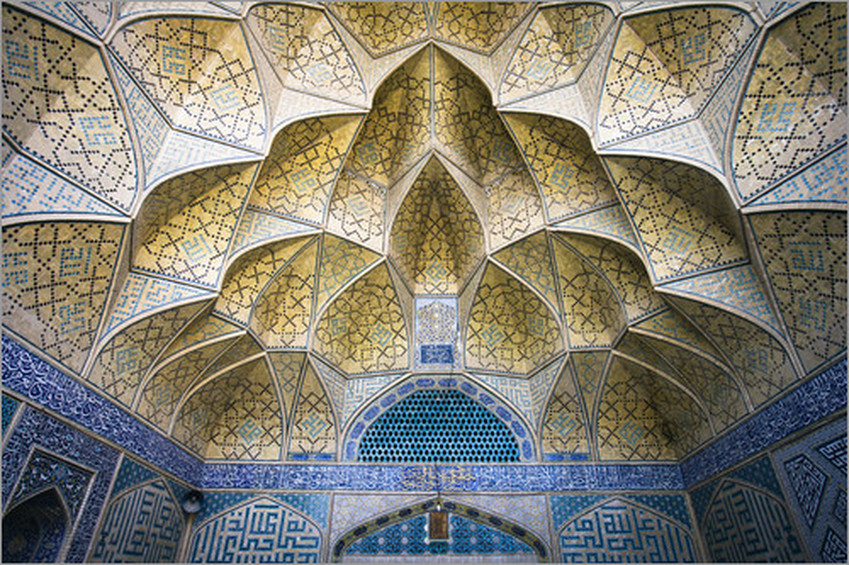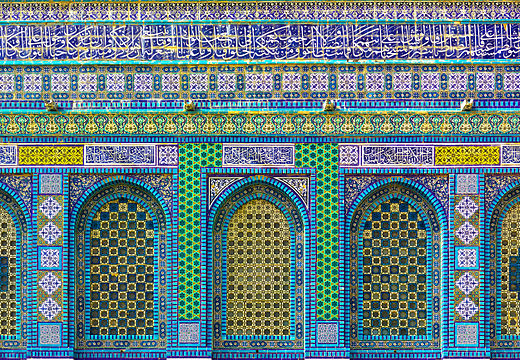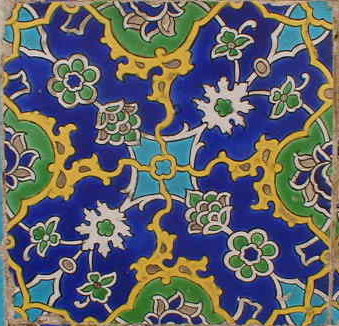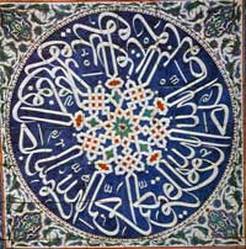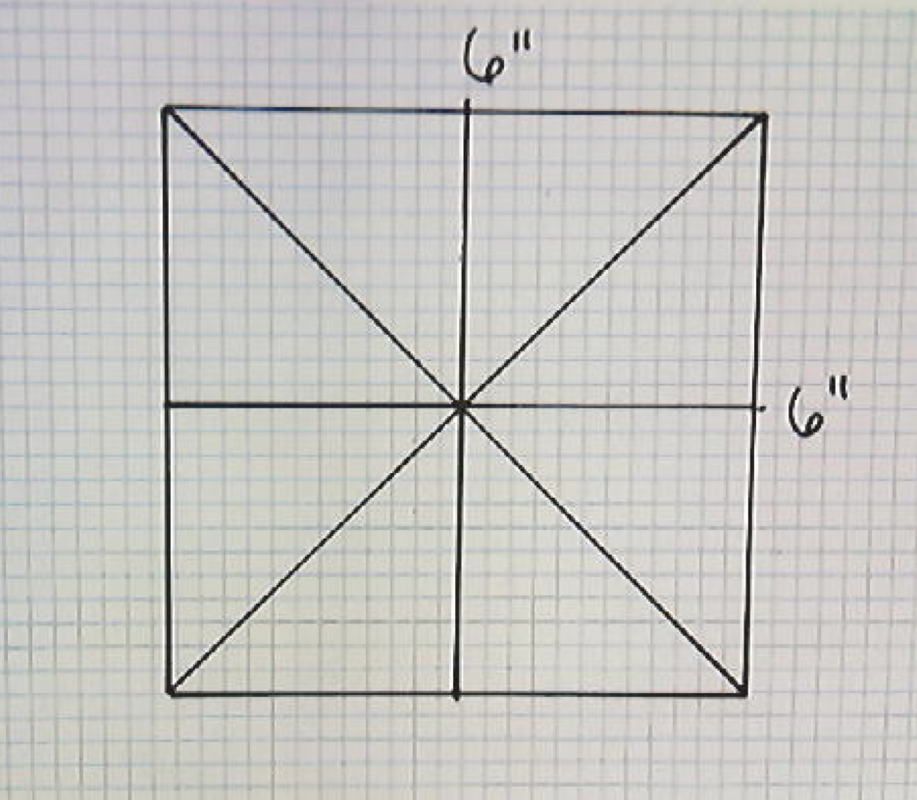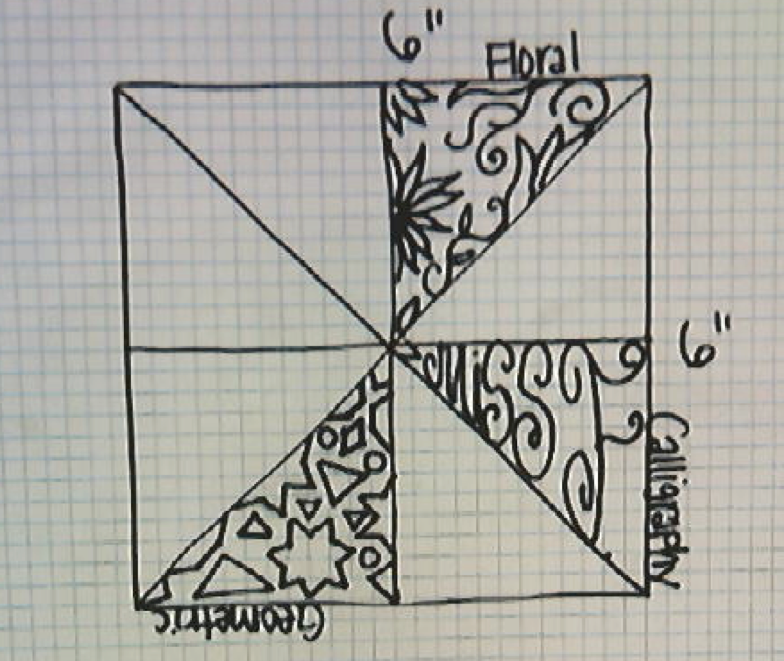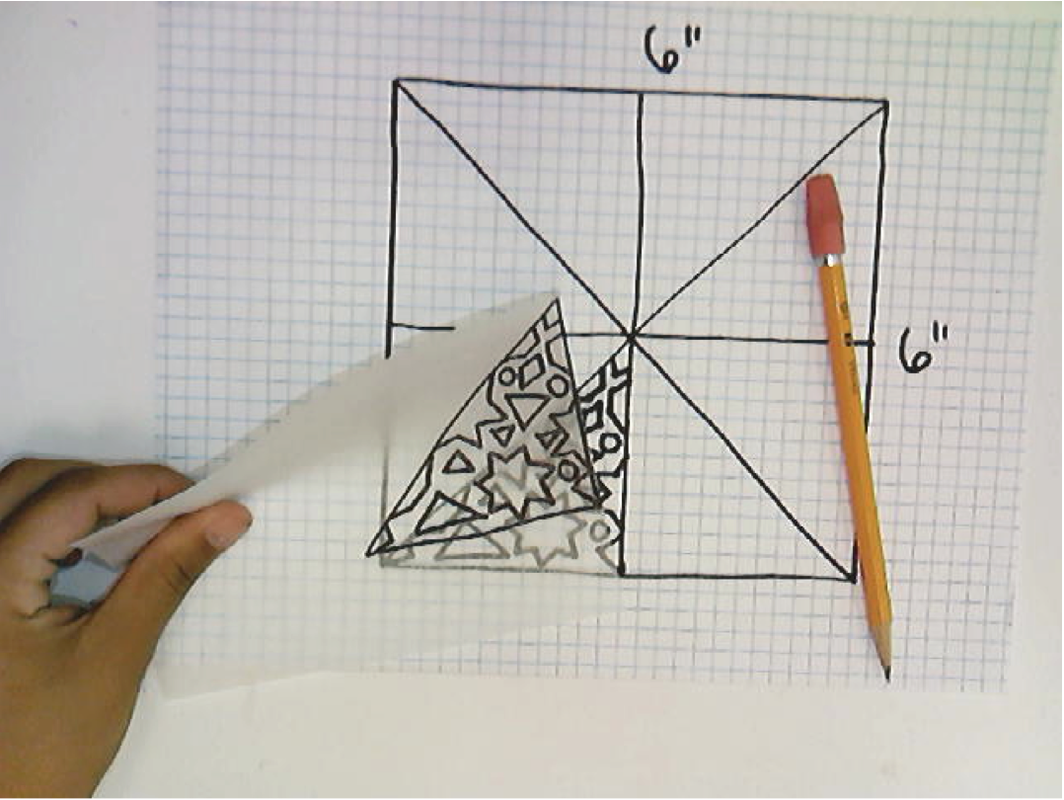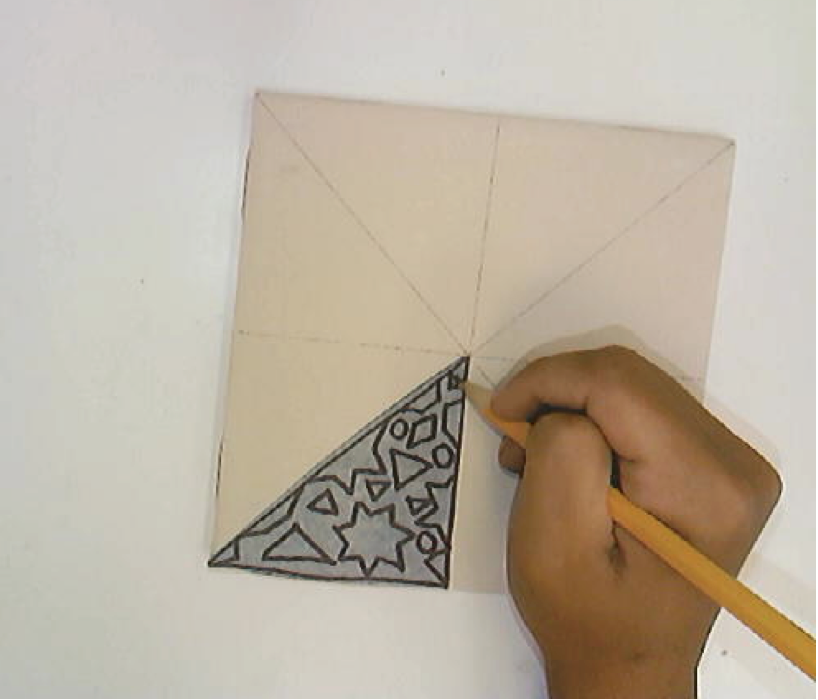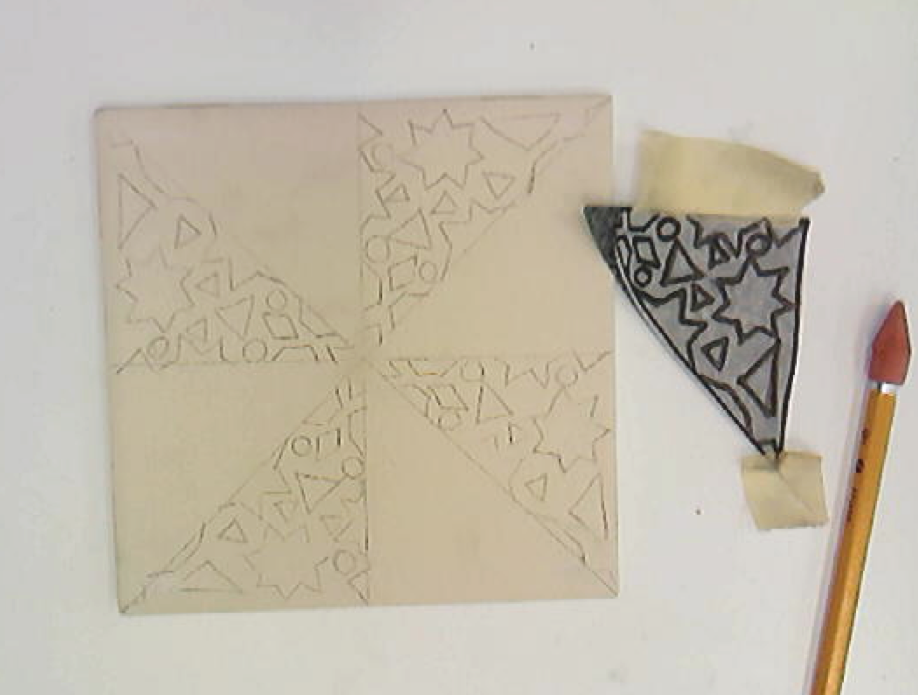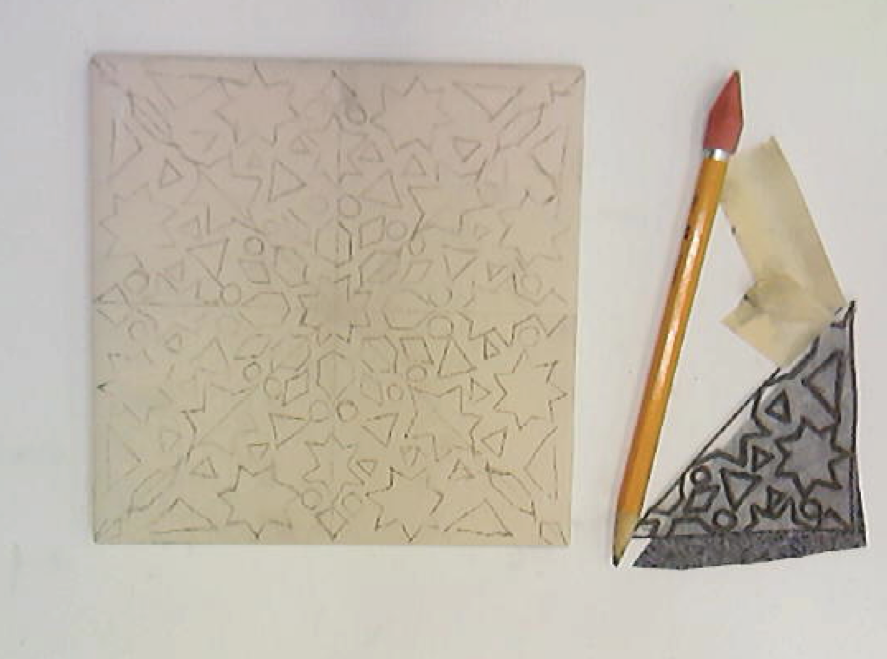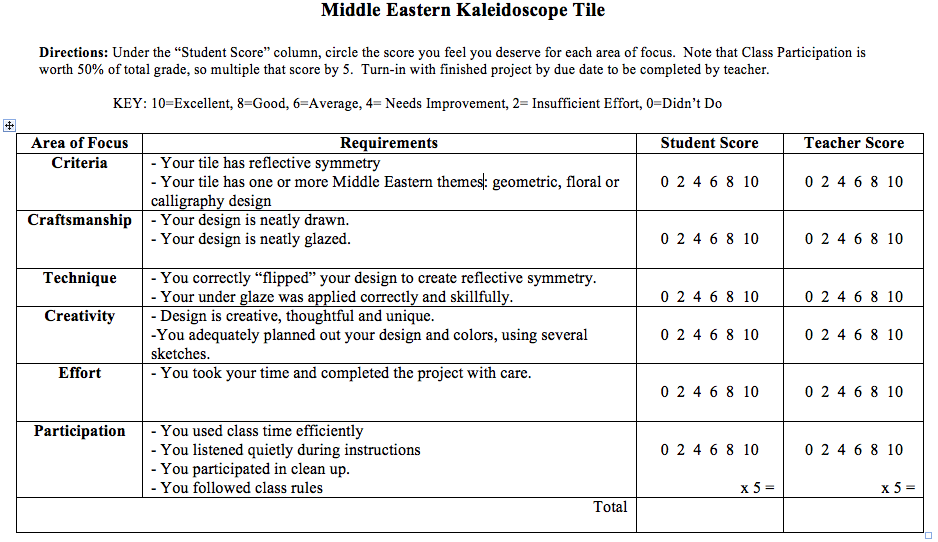Objective: Students will design and glaze a ceramic tile with reflective symmetry inspired by the geometric, floral and calligraphic designs found in middle eastern tile work.
middle eastern tiles
The Middle East is known for its beautiful and intricate ceramic work and mosaics. Ceramic tiles are used to decorate important buildings such as mosques and mausoleums. They often feature richly saturated colors and detailed repeating patterns that can go on forever.
Common themes in middle eastern art and tile work
The following are the 3 most common themes found throughout Middle Eastern artwork and tile work.
Geometric shapes |
floral designs |
calligraphy |
|
|
|
reflective symmetry

An image has Reflectional Symmetry if there is at least one line which splits the image in half so that one side is the mirror image of the other.
Reflectional symmetry is also called line symmetry or mirror symmetry because there is a line in the figure where a mirror could be placed, and the figure would look the same.
Think of a figure on a piece of paper, then folding the paper in two so that the two halfs match up, or actually placing a mirror on the line of symmetry. Another simple example would be to think of the wings of a butterfly.
It is possible to have more than one line of reflectional symmetry- like our tile example to the left, which each have 4 lines of reflectional symmetry.
A well-known example of reflectional symmetry with multiple lines of reflection would be a kaleidoscope. In kaleidoscopes, reflective mirrors and placed at 60 degree angles to form an equilateral triangle. Inside this triangle, various colored objects tumble around as you rotate the kaleidoscope. The arbitrary patterns formed by the colored objects show up as beautiful symmetrical patterns created b the reflections.
Reflectional symmetry is also called line symmetry or mirror symmetry because there is a line in the figure where a mirror could be placed, and the figure would look the same.
Think of a figure on a piece of paper, then folding the paper in two so that the two halfs match up, or actually placing a mirror on the line of symmetry. Another simple example would be to think of the wings of a butterfly.
It is possible to have more than one line of reflectional symmetry- like our tile example to the left, which each have 4 lines of reflectional symmetry.
A well-known example of reflectional symmetry with multiple lines of reflection would be a kaleidoscope. In kaleidoscopes, reflective mirrors and placed at 60 degree angles to form an equilateral triangle. Inside this triangle, various colored objects tumble around as you rotate the kaleidoscope. The arbitrary patterns formed by the colored objects show up as beautiful symmetrical patterns created b the reflections.
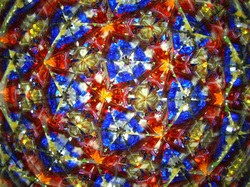
A well-known example of reflectional symmetry with multiple lines of reflection would be a kaleidoscope. In kaleidoscopes, reflective mirrors and placed at 60 degree angles to form an equilateral triangle. Inside this triangle, various colored objects tumble around as you rotate the kaleidoscope. The arbitrary patterns formed by the colored objects show up as beautiful symmetrical patterns created b the reflections.
Your Assignment
You will create a design to glaze onto a ceramic tile. Your design will show reflective symmetry and should be inspired by at least one of the common Middle Eastern themes: geometric shapes, floral designs, or calligraphy. If you want, combine all 3!
1. Create Design
|
1. Using a ruler, draw a 6" x 6" square on grid paper. Divide your square into 8 triangular sections (as shown above).
|
2. Try out at least 3 different design ideas. Each idea should fill ONE triangular section. Try out one geometric design, one floral, and one design incorporating calligraphy.
|
3. Out of the designs you sketched out, choose your favorite one to use for your final design. Create a copy of it on tracing paper. The one you choose will be repeated 7 times to fill the entire 6x6 tile and create reflective symmetry.
|
2. Transfer to tile
|
1. Take a piece of carbon paper and cut it down to a triangle shape. Put the darker side down, lay in your first section, put tracing paper on top and trace over all lines. Keep your paper in place until you are done tracing. Tape it down if you need to.
|
2. Move your triangle two spots over to trace your next section. Continue doing this so that every-other triangle is filled in.
IMPORTANT! Make sure the inside tip of your design is always pointing to the center! |
3. FLIP your pattern over. (darker side of carbon paper is still facing down) Now transfer design to remaining sections of tile.
Still make sure that the inside tip of your design is always pointing to the center! |
Plan out your colors

Using the original design you drew on your grid paper, color it in using markers or colored pencils to plan out what colors you will use.
UnderGlaze
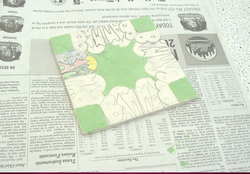
- Place newspaper under paint and tile.
- You will need two coats of underglaze.
- Only paint one color at a time, wash out your brush before moving on to next color.
- Use just the TIP of your paint brush, especially to paint finer lines.
- You will need two coats of underglaze.
- Only paint one color at a time, wash out your brush before moving on to next color.
- Use just the TIP of your paint brush, especially to paint finer lines.
Fire and then clear glaze
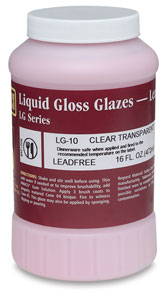
- After your tile has been fired, apply two coats of clear glaze on top.
- We will fire your tile once more, and then it's done!
- We will fire your tile once more, and then it's done!
